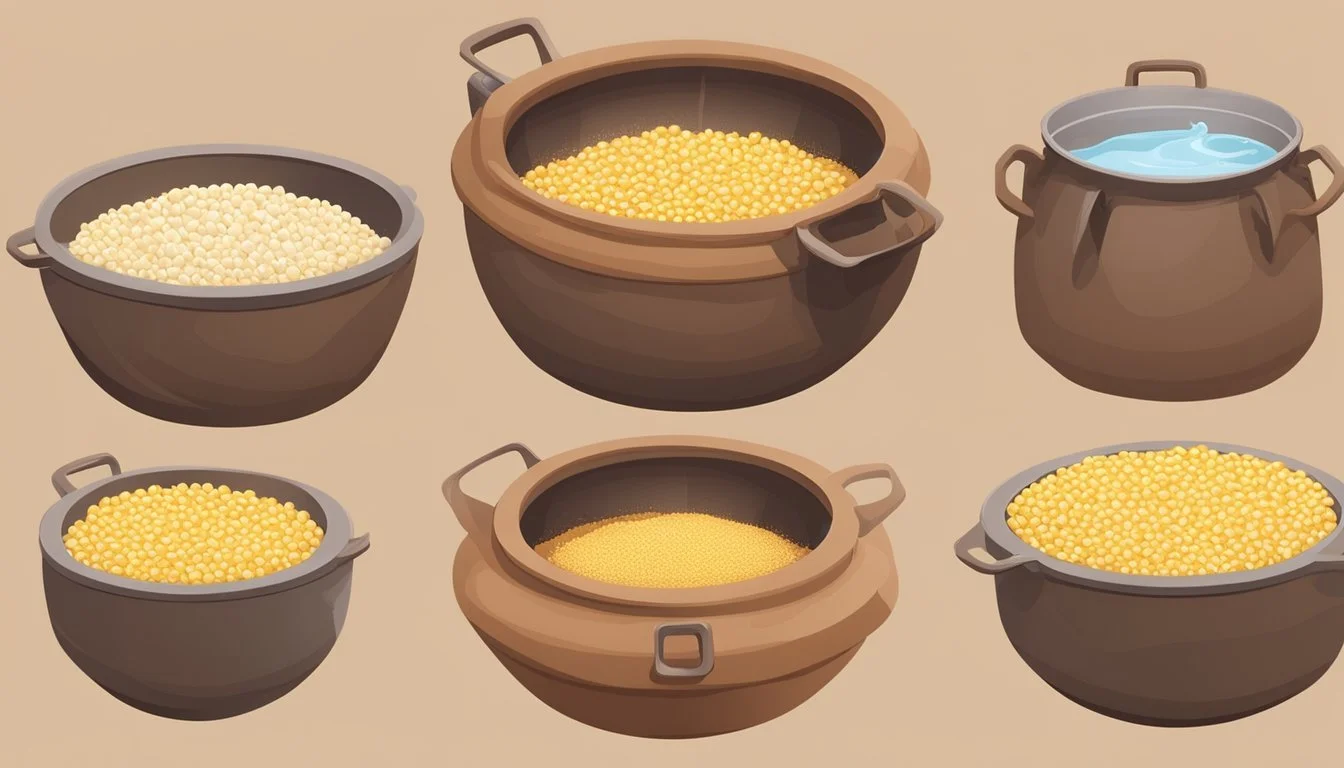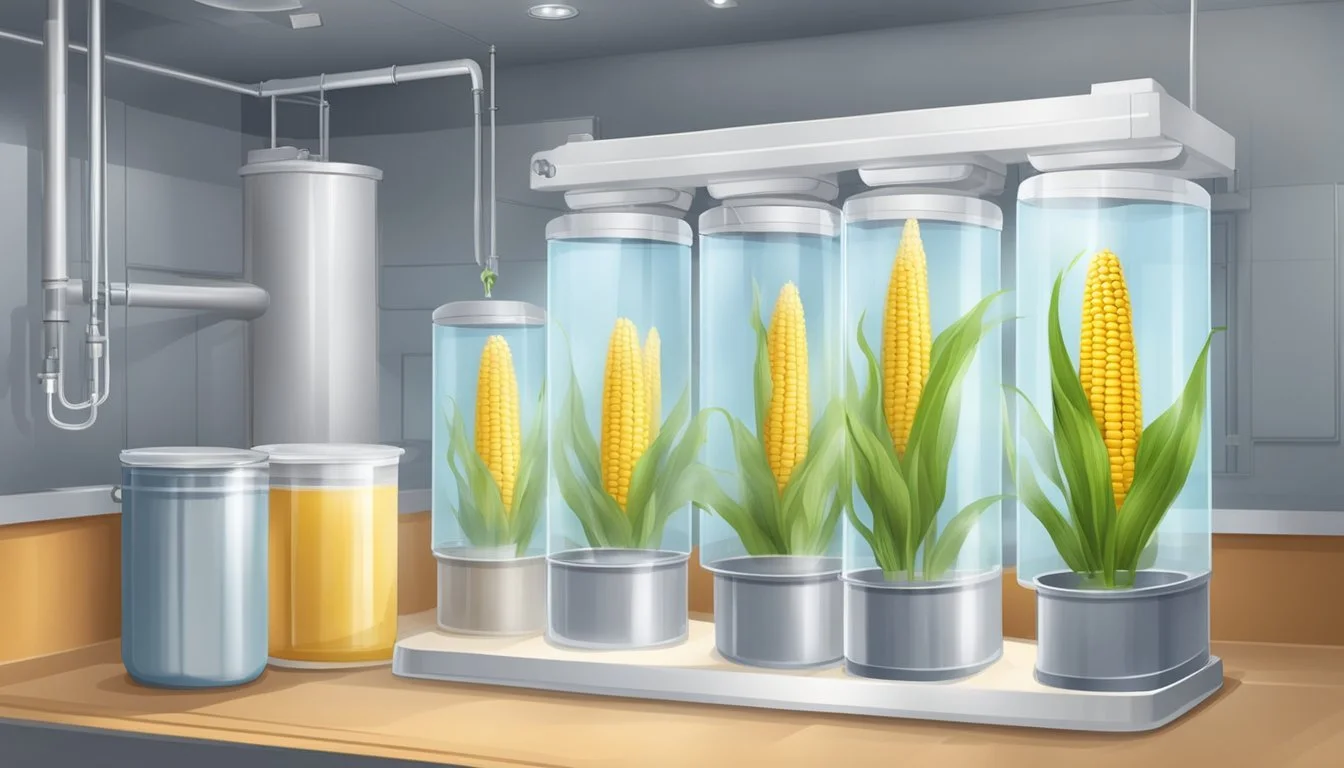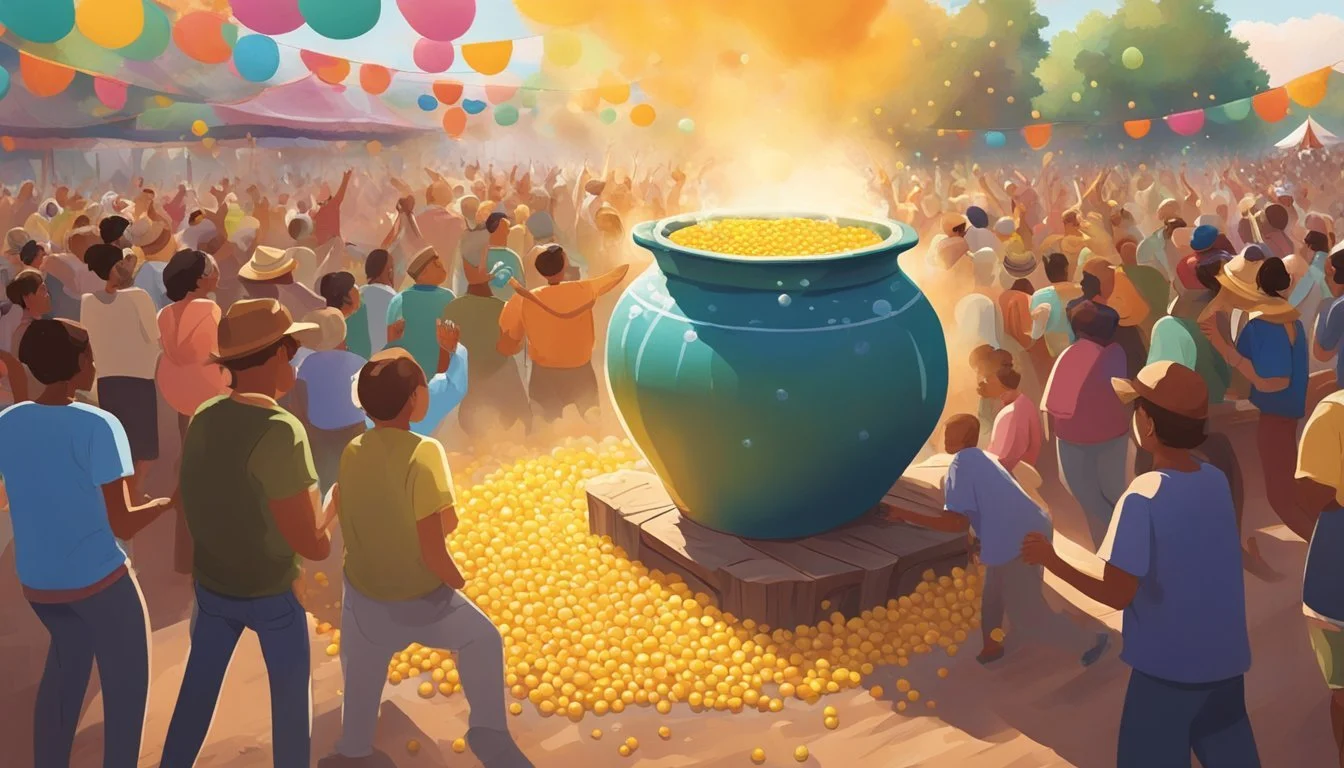How to Ferment Chicha de Jora
A Step-by-Step Guide to Traditional Corn Beverage Brewing
Chicha de Jora is a traditional fermented beverage hailing from the heart of South America. This age-old drink, deeply rooted in the cultural tapestry of Peru, showcases the art of fermentation that dates back to the Inca civilization. As an alcoholic corn beverage, it is meticulously crafted from Jora, a type of malted corn that imparts a unique flavor profile to this indigenous concoction.
The fermentation process of Chicha de Jora involves a series of steps that reflect both the ingenuity and the cultural practices of the local communities. The maize is first germinated to release malt sugars, boiled to create the wort, and then left to ferment, typically in large earthenware vats. These traditional methods have survived the test of time, bearing witness to the importance of Chicha de Jora in social and ceremonial contexts.
In contemporary times, Chicha de Jora continues to be a living link to the past, enjoyed not just for its taste but also for its cultural significance. The craft of fermentation, passed down through generations, highlights the exceptional connection between the people of Peru and their cherished heritage. The drink can offer a variety of flavors, sometimes including infusions of fruits like strawberries to create a more palatable beverage, adapted to modern tastes without losing its historical essence.
Cultural Significance
Chicha de Jora is not just a fermented beverage but an intrinsic part of South American history and culture, especially within Peru. It has been a symbol of tradition and a testament to the rich cultural practices from Inca times to modern day Peru.
Historical Perspective
In Inca society, Chicha de Jora held a place of high esteem and was deeply entrenched in religious and social events. The Incas traditionally produced it for ceremonial purposes, such as Inti Raymi, a festival that honored the sun god Inti, and it played a vital role in offerings to Pachamama, the earth mother. Inca nobility often consumed Chicha de Jora as a luxury, while it was also accessible to the masses, illustrating its wide acceptance across different social strata.
Tradition: A staple during the time of the Inca Empire.
Inti Raymi: An important festival featuring Chicha de Jora.
Pachamama: Earth deity revered with offerings of Chicha de Jora.
Inca Nobility: High-status individuals who partook in its consumption.
The legacy of Chicha de Jora is intertwined with iconic landmarks such as Machu Picchu, where remnants of its presence during Inca times have been discovered, cementing its historical significance.
Modern Practices
Today, Chicha de Jora continues to be an emblem of cultural identity in the Andean regions. It is still crafted using traditional methods and is a common sight at local markets and community gatherings, reflecting its continued cultural relevance. While industrial methods have risen, many communities uphold the time-honored practice of home fermentation, underscoring the drink's importance as a living tradition.
Cultural Identity: Chicha de Jora as an expression of Andean heritage.
Continuity: Persistent traditional methods of production.
Community: A unifying element in social and religious gatherings.
This beverage remains a symbol of the living history and practices stemming from ancient Andean civilizations. It stands as a testament to the cultural endurance of the indigenous peoples and their practices through centuries of change.
Ingredients and Varieties
In crafting Chicha de Jora, understanding the traditional base ingredients and exploring the range of natural additives provides insight into both its historical significance and contemporary variations.
Jora Corn and Alternatives
Jora corn is the principal ingredient in Chicha de Jora, a specially germinated maize integral to its authentic flavor. It undergoes a process of germination to convert its starches into fermentable sugars. In cases where Jora is not accessible, alternatives such as purple corn or quinoa can impart unique flavors, although they will differ from the traditional taste. Fermentable sugars from these grains are vital for the characteristic alcoholic content of Chicha.
Primary grain: Jora corn (traditional), Purple corn, Quinoa (alternatives)
Process: Germination, boiling, fermentation
Natural Additives
The flavor profile of Chicha de Jora can be enhanced with various natural additives. Fruits like strawberries, apple, and pineapple are often incorporated for a sweeter, more complex taste. Another common addition is honey, which can alter both the sweetness and the fermentation process.
Fruits: Strawberries, Apple, Pineapple (for sweetness and flavor)
Sweeteners: Honey (affects sweetness and fermentation)
These naturally-derived additives allow brewers to create variations on the traditional Chicha de Jora, catering to different palates and regional preferences without straying too far from its cultural roots.
Preparation Process
The preparation process of Chicha de Jora centers around two critical stages: the germination of maize to unlock sugars and the careful fermentation process that develops its unique flavor. These steps are vital for crafting an authentic beverage that pays homage to its traditional Incan roots.
Germination
Germination is the inaugural step where maize kernels are soaked in water to begin sprouting. This phase initiates the activation of enzymes which convert the corn's starches into fermentable sugars.
Soaking: Place maize kernels in water until they begin to sprout, usually taking around 1-2 days.
Sprouting: Drain and spread the soaked maize in a layer, often covered with a cloth to maintain moisture, and leave it in a warm place for several days.
Rinsing: Regularly rinse the germinated corn to prevent mold and remove by-products.
Fermentation
The fermentation process involves combining the germinated maize with water and sometimes with additional ingredients to add sweetness or flavor.
Water and Germinated Maize: Mix the sprouted maize with water and heat to create a mash.
Natural Enzymes: The natural enzymes released during germination break down more starches into sugars during this mashing process.
Cooling: Allow the mixture to cool to a suitable temperature for fermentation.
Sugar Addition: Where desired, sweeteners like sugar or raw cane sugar can be added.
Optional Use of Saliva: Traditional methods involve chewing some of the maize and adding it back to the mash to introduce enzymes from saliva, further aiding fermentation.
Fermentation Vessel: Transfer the cooled mash to clean fermentation vessels, traditionally large clay pots.
Covering: Cover the vessels with muslin or a similar breathable fabric to keep out contaminants while allowing airflow.
The preparation of Chicha de Jora concludes with a fermentation period that can last from several days to weeks, depending on desired taste and alcohol content.
Flavor Profile
Chicha de Jora offers a unique taste adventure, resulting from the distinctive ingredients and the fermentation process. This traditional South American beverage possesses a flavor complexity that is rich in history and culture.
Influence of Ingredients
The primary ingredient in Chicha de Jora is germinated maize, which is responsible for the foundational flavors of the drink. Sweetness can vary but often reflects a subtly sweet undertone due to the malt sugars extracted during preparation. Fruits, such as strawberries, may be added to sweeten the drink and impart additional flavors, resulting in variations that range from tangy to mildly fruity. The alcohol content in Chicha de Jora is typically modest, hovering around 1 to 3 percent, which allows the flavors derived from the fermented maize to take center stage without the overpowering presence of alcohol.
Texture and Consistency
Chicha de Jora is renowned for its distinctive texture which can best be described as somewhat murky due to the presence of fermented maize solids. It is often pale yellow in hue and may have a variable consistency depending on its preparation, ranging from lightly viscous to a thicker, pulp-like texture that can offer a more robust mouthfeel. Serving Chicha de Jora at different temperatures can also influence its texture, potentially enhancing the sensation of its natural carbonation which is a result of the fermentation process.
Serving and Consumption
Chicha de jora is traditionally served in authentic, cultural settings that enhance the drinking experience. Proper serving and consumption are integral to appreciating this age-old beverage.
Traditional Vessels
In Peru, chicha de jora is often served in vessels made from pottery that hold cultural significance. These traditional vessels, such as cántaros or potos, are customary in both ceremonial and daily settings. These earthenware containers can vary in size but are generally large enough to hold several servings of chicha. Serving chicha in these pottery containers at home or in bars known as chicherías, particularly in regions like Cusco, fosters a connection to the Incan heritage from which the drink originates.
Pairing with Food
Chicha de jora pairs well with a variety of regional dishes. Its unique flavor complements spicy and savory plates, making it a suitable choice for accompanying a range of Andean cuisine. Notably, chicha can be enjoyed with ceviche, a famous Peruvian dish consisting of fresh fish cured in citrus juices. It also goes well with corn-based dishes and stews, providing a cultural culinary experience. The light acidity and earthy tones of chicha balance the flavors of these traditional meals, turning the act of eating into a gastronomic journey through South American flavors.
Regional Variations
Chicha de jora is a traditional South American fermented corn drink with a rich tapestry of variations that reflect the diverse cultures and methods of preparation across the region. These variations range from differences in the base ingredients and fermentation techniques to the scale of production, whether it’s for home consumption or artisanal sale.
Differences Across Countries
In Peru, especially in the Andean region, chicha de jora is the cornerstone of social gatherings and ceremonies. Peruvian chicha is typically made by germinating maize, akin to malting barley, to produce sugars that will ferment. The process involves boiling the wort and fermenting it in large earthenware vats for several days. Unique Peruvian twists sometimes see fruits like strawberries added to adjust the flavor.
Ecuador often favors the use of jora corn, a type more common to the highlands, with a method that includes chewing the corn and spitting it out to initiate fermentation. This process can last a few weeks and results in a beverage that is deeply ingrained in Ecuadorian community traditions.
In contrast, Colombia and Mexico, while not as synonymous with chicha as the Andean countries, have their local versions that can differ in grain types and fermenting methods, reflecting the diversity of their indigenous and colonial histories.
Home Brewing Vs. Artisanal Production
Home Brewing: Home brewing of chicha is intimate and community-focused, typically hewing closer to traditional methods involving family and friends. It's not unusual for each household to have a unique family recipe passed down through generations. These versions can vary significantly from home to home.
Artisanal Production: Artisanal producers, on the other hand, may scale up these traditional processes for a larger audience. They maintain a high level of quality and cultural authenticity, often marketing their chicha as a craft product reflective of South American or, more specifically, Andean heritage. Artisanal production allows for innovation within the bounds of the tradition, introducing variations in taste and potency that expand chicha’s appeal in the broader Latin American market.
Health and Safety Considerations
When fermenting Chicha de Jora, safety is paramount, as with any home brewing process. This section will help the brewer understand the safety concerns, from monitoring alcohol content to identifying signs of contamination.
Alcohol Content and Consumption
Chicha de Jora is an alcoholic beverage and its alcohol by volume (ABV) can vary. As with all fermented beverages, monitoring the ABV is essential for personal health and to comply with government regulations on alcohol consumption. A typical ABV for homemade Chicha can range from 1% to 3%, but it can reach higher percentages if fermented longer. Individuals should consume it responsibly, taking into account their personal tolerance and local laws regarding alcohol consumption.
Red Flags in Preparation
Red flags during Chicha preparation indicate a potential health risk, and recognizing them is critical:
Odor: A foul or unexpected odor can signal contamination.
Mold: Visible mold growth is an obvious sign of spoilage.
Appearance: Cloudiness or sediment does not necessarily mean spoilage, but drastic changes might.
Taste: A noticeably off or sour flavor can denote an unsafe batch.
Any suspicion of contamination suggests the brew should be discarded to prevent health risks. It's important to maintain a clean environment and use sanitized equipment during preparation to reduce the risk of spoilage.
Chicha in Festivals and Events
Chicha de Jora plays a pivotal role in South American festivals and events, serving not only as a traditional beverage but also as a symbol of cultural heritage and religious significance.
Religious Ceremonies
During religious ceremonies, Chicha de Jora is often presented as an offering to Pachamama, the earth goddess revered in Andean cultures. Its fermentation process, symbolizing transformation and life, aligns with the spiritual themes of renewal and gratitude. Participants may pour Chicha onto the ground as a libation or consume it during ceremonial feasts to honor deities and ancestral spirits.
Cultural Festivities
Chicha de Jora's presence is a hallmark of cultural festivals, where it facilitates social bonding and collective joy. At these events, people gather to dance, celebrate, and share Chicha, which is customarily brewed in large quantities for communal consumption. It's not just a drink but a cultural artifact, embodying the festive spirit and communal ties that such gatherings reinforce.
Impact on Local Economy
Chicha de jora has significant implications for the local economies of South American regions, particularly in Peru, where it acts as both a staple source of income and a cultural attractant for tourism. Its production and sales influence local market dynamics and offer a gateway into the heritage for visitors.
Chicha Market
Peru's Chicha de Jora is more than just a native Peruvian beverage; it represents a thriving commercial segment in the local markets. Small-scale and family-run businesses frequently brew this traditional fermented corn drink, supplying it to local bars and markets. With Cusco as a central hub, the demand for authentic chicha supports various stakeholders, from maize farmers to street vendors. In cities and villages where chicha is popular, the pitch of a clay pitcher filled with the iconic drink can be a significant economic offering. Notable is that these transactions often happen in informal settings, contributing to a parallel economy not always reflected in official statistics.
Chicha's economics are composed of direct sales in local markets and its integration in the wider food and beverage industry. Some key points include:
Direct Sales: Vendors sell chicha in markets, often from large earthenware vats or pitchers, to both locals and savvy tourists looking for an authentic taste.
Indirect Contributions: Restaurants and bars may offer chicha as part of their menu, sourcing from local producers and supporting a supply chain within the community.
Tourism and Cultural Heritage
Tourism plays a pivotal role in the regional economies, particularly for communities near attractions like Machu Picchu. Chicha de jora ties intricately into the cultural heritage of the area, with tourists often seeking to experience traditional Andean life. As part of the cultural reservation, chicha can be a focal point for educational and experiential tourism programs.
In Cusco and other historical sites, vendors may attract tourists by offering chicha tasting sessions, pairing the beverage with indigenous foods, and sharing the drink's historical significance. Such interactions not only generate direct revenue but also bolster the region's image as a hub for authentic and traditional experiences. Heritage tourism, with chicha at its core, encourages a sustainable economic model by preserving traditional practices and ensuring they provide tangible benefits to the local populace.
Highlighted aspects of this cultural connection include:
Cultural Workshops: Visitors may partake in chicha brewing workshops, contributing to both education and the economy.
Complementary Goods: As a popular beverage, chicha encourages tourists to explore other local products and crafts, benefiting a range of businesses.




